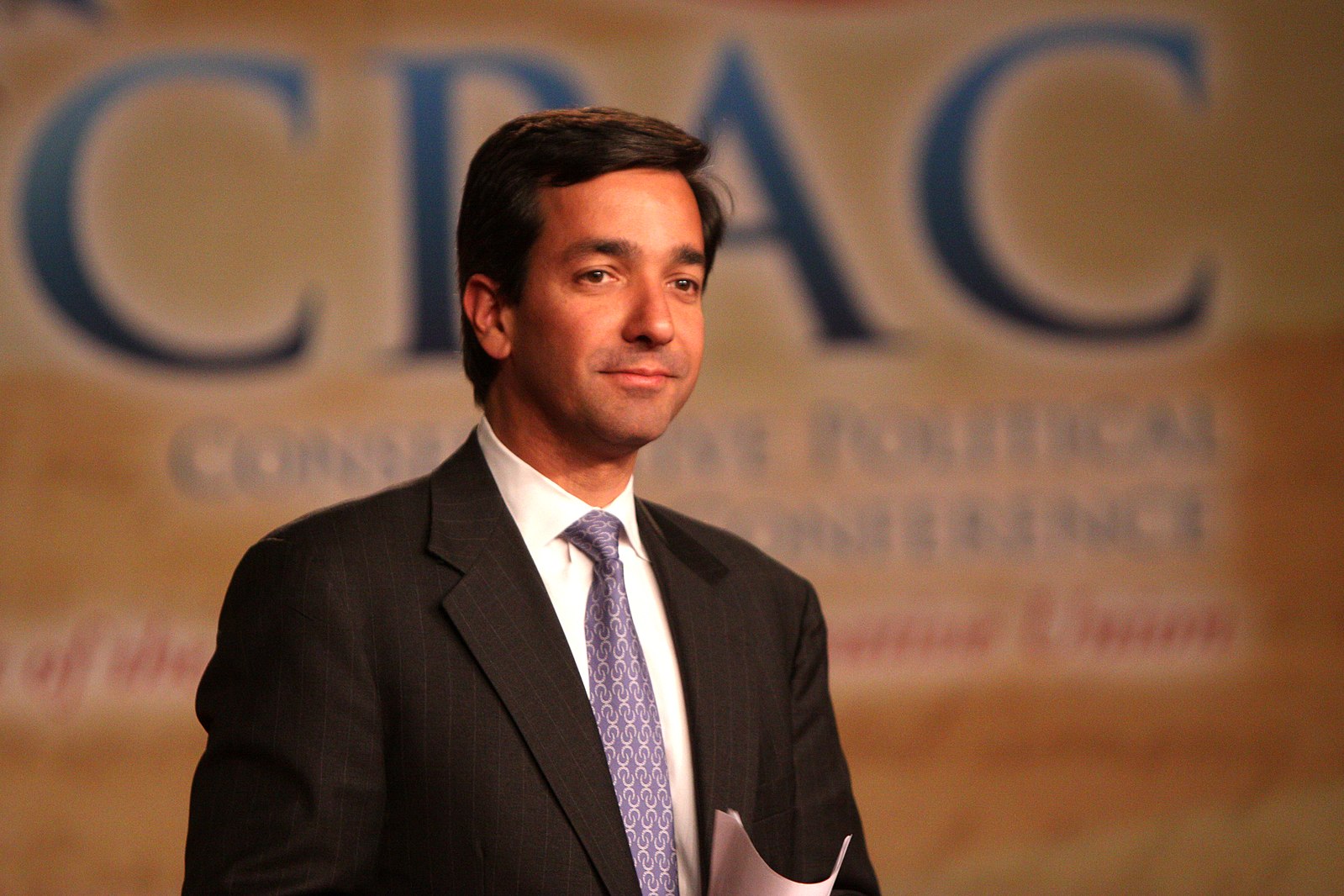National Committeeman Governor Luis Fortuño
Former Governor of Puerto Rico Luis Fortuño was born on October 31, 1960 in San Juan, Puerto Rico.
He studied at Colegio Marista in Guaynabo, where he graduated with honors in May 1978. He attended Georgetown University in Washington D.C., where he received a Bachelor of Arts from the School of Foreign Service in 1982. In 1985, he graduated from the University of Virginia’s School of Law where he earned his Juris Doctor. During his college years in Washington D.C., he interned at the Puerto Rico Federal Affairs Administration. Committed to statehood and equality for the American citizens of Puerto Rico, he co-founded the Puerto Rico Pro-Statehood Students Association.
Fortuño is married to Lucé Vela and is father to triplets María Luisa, Guillermo, and Luis Roberto.
He entered public service in 1993, when he was appointed Executive Director of the Puerto Rico Tourism Company. One year later, he also became the first secretary of the newly created Department of Economic Development and Commerce. During this period, he was a member of various governing boards of public corporations, and received numerous awards. A few examples:
- 1994 Public Servant of the Year Award by the Puerto Rico Chamber of Commerce
- Distinguished Executive of 1994, by the Association of Sales and Marketing Executive from Ponce
- 1995 Public Servant of the Year by the Marketing Industry and the Food and Beverage Products Association of Puerto Rico (MIDA)
- Man of the Year in 1996 by Negocios del Caribe
In 1996, he returned to private practice as an attorney.
In the 2004 general election, Fortuño was elected Resident Commissioner for Puerto Rico. For the first time in the history of Puerto Rico, he held the position with a Governor of the opposing party. In the 109th Congress, Mr. Fortuño was elected by his Republican colleagues as vice president of the Republican Freshmen Class. In addition, he served as vice president of the Congressional Hispanic Conference during the 109th Congress, and as president of the same during the 110th Congress. During his four years in the U.S. House of Representatives, he was a highly productive Resident Commissioner who obtained record amounts of federal funds in appropriations. Most of the funds were allocated to infrastructure projects on the Island that included road improvements, flood control, veterans’ affairs, and public safety, among others.
On February 19, 2007, Luis Fortuño announced his candidacy for Governor of Puerto Rico for the 2018 elections before thousands of people in Aguadilla. On November 4, 2008, he was elected as the 10th Governor of Puerto Rico with the largest margin of victory in 44 years. As Governor, Luis Fortuño’s main priority was to revitalize the economy of Puerto Rico. He successfully implemented a Public-Private Partnerships program that resulted in maintenance and management concessions of the island’s principal airport, mayor highways, and ferry services to the islands of Vieques and Culebra. He pushed forward reforms and strategic projects to spur the island’s integral and sustained economic growth, including the expansion of Route 66, and express lanes between San Juan and Dorado. He promoted the export of services, tourism, banking and securities, and film through innovative incentive programs.
His administration also acted decisively to stabilize the island’s finances. In two years, Fortuño – amid the worst economic crises since the 1930s — reduced the budget deficit by 80%, more than any other governor in the Nation. Because of the fiscally responsible measures implemented, Fortuño also introduced legislation in 2010 to implement the largest tax cut in the history of Puerto Rico, reducing the individual’s tax burden by an average of 50% and the tax burden of businesses by 30%. In 2010, Puerto Rico received the highest credit rating increase of any State or territory in the Nation.
Governor Fortuño’s leadership transcended the geographical limits of the territory of Puerto Rico.He became the president of the Southern Governors Association (SGA), as well as presiding over the Council of State Governments. He also served on the Board of Directors of the Center for Best Practices of the National Association of Governors (NGA), as well as the Board of Governors of the President of the United States. His fight for statehood for Puerto Rico led him to promote a plebiscite on the island, achieving a clear majority vote in favor of statehood for the first time in the island’s history.
Throughout his public service career, Luis Fortuño demonstrated an unwavering commitment to our veterans. As Resident Commissioner and Governor, Fortuño obtained millions of dollars in federal funds for the improvement and expansion of the island’s Veterans Hospital, including the creation of the first ward for women veterans in the hospital, additional parking for patients and families, and asbestos removal. He also developed projects to improve the quality of life of veterans and their families, like the National Cemetery in Aguadilla, the Veterans House in Juana Diaz, and the expansion of regional health care clinics throughout the Island.
His commitment to Education was shaped by the construction of the 21st Century Schools, a project that included a multimillion-dollar investment in infrastructure improvements to public schools in all municipalities. It was during his administration that the Government successfully ended a 37-year old Morales Feliciano case on institutional and prison abuse, which effectively liberated the Corrections Department from federal oversight. Other significant achievements of Governor Luis G. Fortuño included the increase in funds under Medicaid, which gave way to the Mi Salud health care program, as well as the expansion of the Mayagüez Trauma Center.
As a former governor, he is committed to the principles of economic freedom, personal responsibility and opportunity for all, regardless of their socio-economic level – values that he promoted through the Center for Economic Renewal, Excellence and Growth (CRECE).

